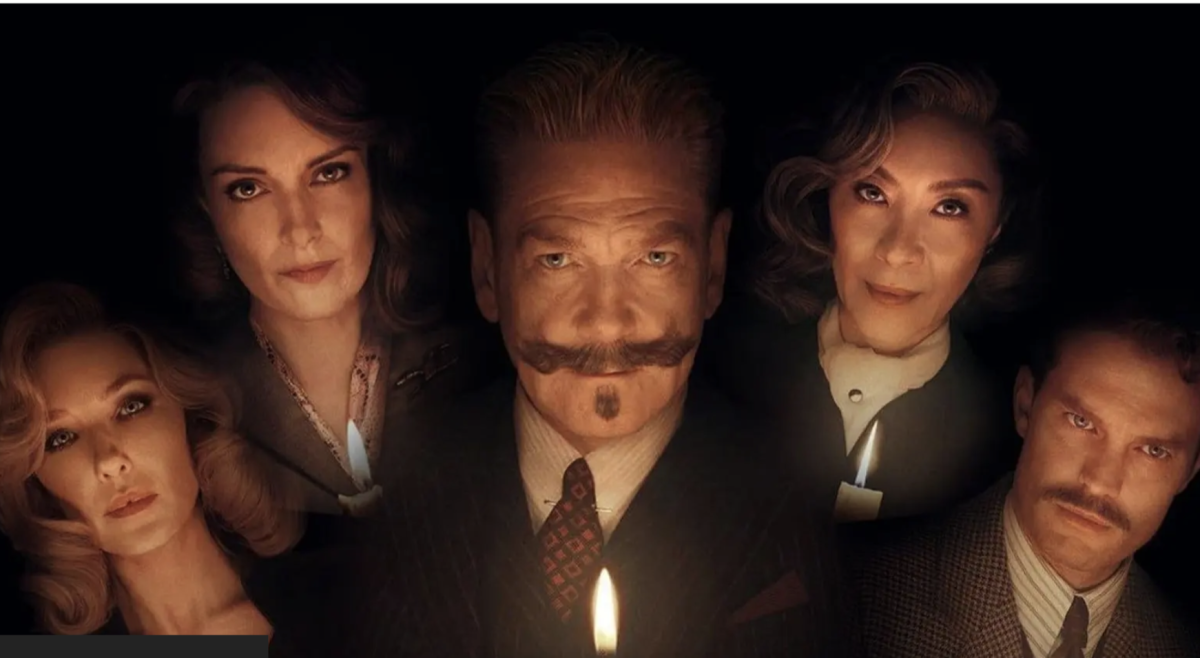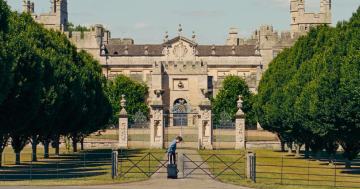
A Haunting in Venice adds a fresh twist to Agatha Christie’s portrayals on screen. Photo: Supplied.
A Haunting in Venice is the third star/director outing of an Agatha Christie work with Kenneth Branagh at the helm, following his versions of Murder on the Orient Express and Death on the Nile.
Both works have been made numerous times and much better versions exist; Branagh’s turns were woefully dreary, cliched and showed the star as a conceited and arrogant Hercules Poirot.
So, what to expect from the third adaptation of an Agatha Christie work? Well, things have changed quite a bit this time and all for the better.
To start with, it’s based on a work written in 1969, Hallowe’en Party, that has never been made into a film and is set in a very spooky, supernatural and post-war (1947) Venice, where Poirot has effectively retired from all detective work. Two wars and the loss of his beloved have taken a massive toll.
Visited by longtime friend and novelist Ariadne Oliver (Tina Fey), he is coaxed to a children’s Halloween Party followed by a seance conducted by questionable mystic Mrs Reynolds (Michelle Yeoh), whose techniques Oliver wants to debunk and declare her a fraud.
The palazzo where all this occurs used to be an orphanage where all the children were locked up and left to die.
A bereaving Rowena Drake (Kelly Reilly) believes it was the ghosts of these children that drew her own daughter to commit suicide. She has called for Mrs Reynolds to perhaps hear her child Alicia’s voice once more.
Alicia’s somewhat mottled sulphur-crested cockatoo who haunts the palazzo hasn’t uttered a word since.
The séance includes the usual list of Christie suspects: Poirot and Oliver, Drake, the clairvoyant, the daughter’s doctor and his son, the daughter’s former fiance and the housekeeper played by Camille Cotin, who starred in the brilliant French TV series, Call My Agent.
As with most of the Poirot plotlines, things turn pear-shaped pretty quickly and the bodies, fewer than in most, start to pile up.
A few things distinguish this outing.
The writer is Michael Green, an American with a long career in science fiction, including Blade Runner 2049, Logan and Alien: Covenant. In other words, he is not someone you’d usually pick, but he comes at this project with fresh eyes and vision and a clear understanding of previous films set in Venice.
Branagh, too, draws on that same heritage. There are moments of Death in Venice, more than a hint of Don’t Look Now, and in some of the more surrealistic scenes where Poirot imagines he is seeing and communicating with children and particularly Alicia, we are reminded of Les Diaboliques, and to a lesser extent The Cabinet of Dr Caligari.
But film references aside, A Haunting in Venice reinvents Branagh as Poirot.
He’s more humble, reflective, self-doubting and all too human, and we, as an audience, can identify and sympathise with him.
This is the film’s biggest selling point: reconnecting with the great detective’s mind is what drew us to the books in the first place and why this work struck me as refreshing and almost a new version of the Belgian detective.
I think Branagh has been taking serious notes, not so much as the lead actor but a director who needs more compassion in his characters.
As with all Poirot setups, there is a particular formula to it that you will either buy into or not. This time I did and I was glad for the experience.
This movie won’t break any world records, but A Haunting in Venice is solid entertainment. Three stars out of five.
A Haunting in Venice is screening at major cinema chains.
Marcus Kelson is a Canberra writer and critic.














